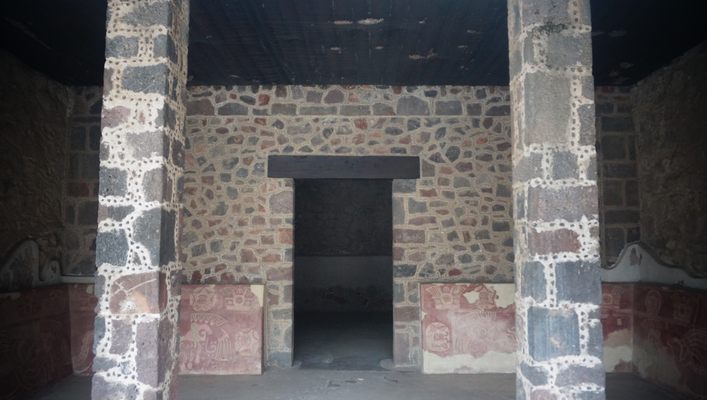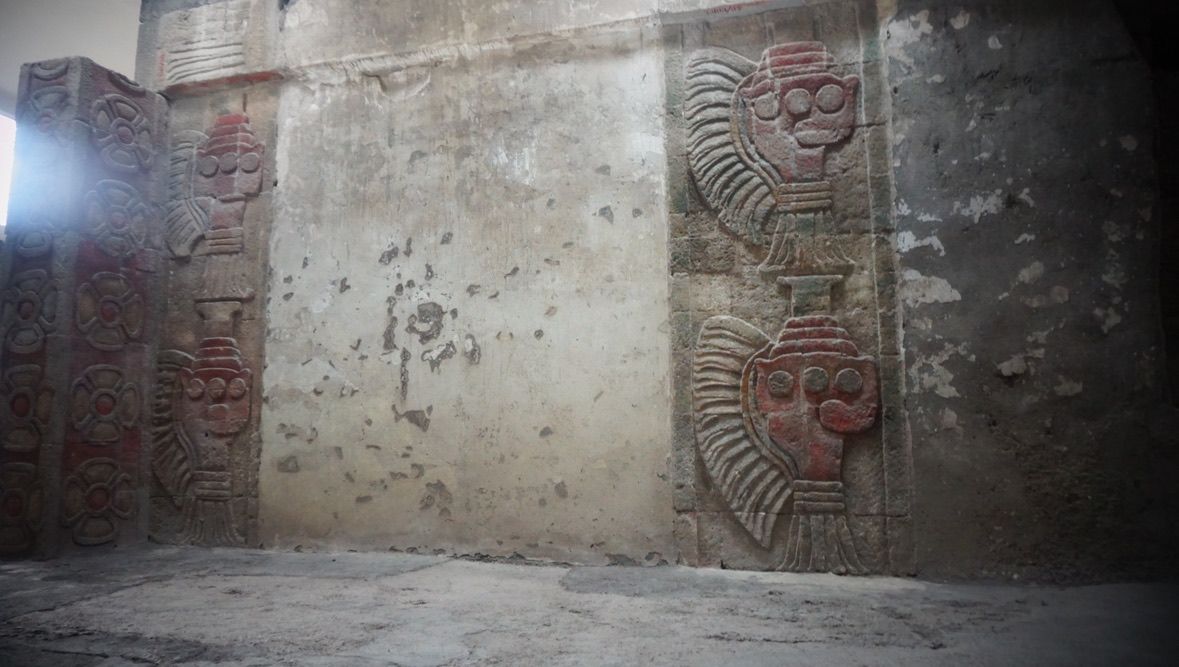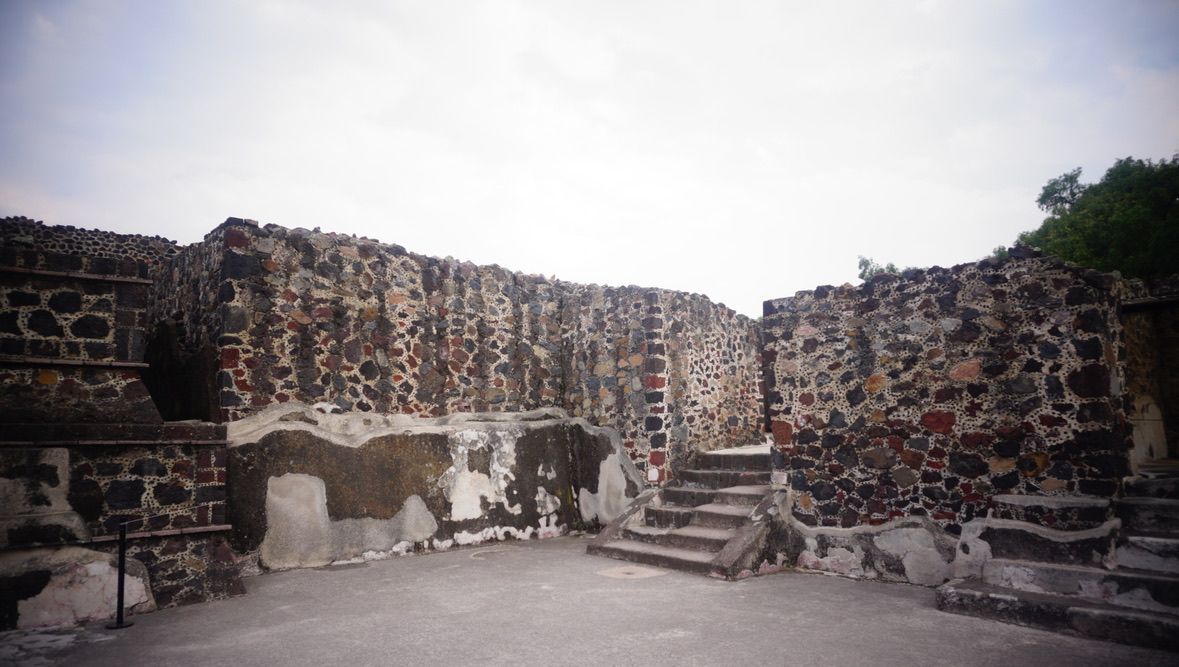About
In June 1962, archaeologists Jorge Acosta and Jorge Canseco found an enormous palace in Teotihuacán. In 1964, the pair decided to completely restore the space to its former grandeur.
The Palace of Quetzalpapálotl—or Palace of the Butterflies—was named for its many reliefs in the shape of butterfly wings. In the restored courtyard, there is an almost imperceptible tunnel that leads to the original rooms of the palace underground.
Inside the rooms, the remains of Teotihuacán mural paintings can be found. Among them is one that represents a procession of jaguars playing trumpets made of seashells and a procession of green birds from whose beaks flow streams of water.
Although the archaeologists do not know if these birds represent the resplendant quetzal or macaw parrots, the truth is that the importance lies in the seashells that decorate the columns. They are huge feathered seashells, some of which show their original colors.
The greatest flourishing of this culture occurred around the second century. The mysterious disappearance of the Teotihuacán culture has not allowed much to be known about the meaning of the decorations or the murals. It is believed that the palace was once inhabited by priests and that, over the centuries, the Palace of Quetzalpapálotl was built atop the original Teotihuacán palace.
Know Before You Go
Today, the underground palace, as it has been dubbed, is one of the few places where people can view original Teotihuacán mural paintings.
Flavors of Oaxaca: Markets, Mezcal & Home-Cooked Meals
A Culinary and Cultural Journey Through Oaxaca.
Book NowCommunity Contributors
Added By
Published
December 5, 2018



























































